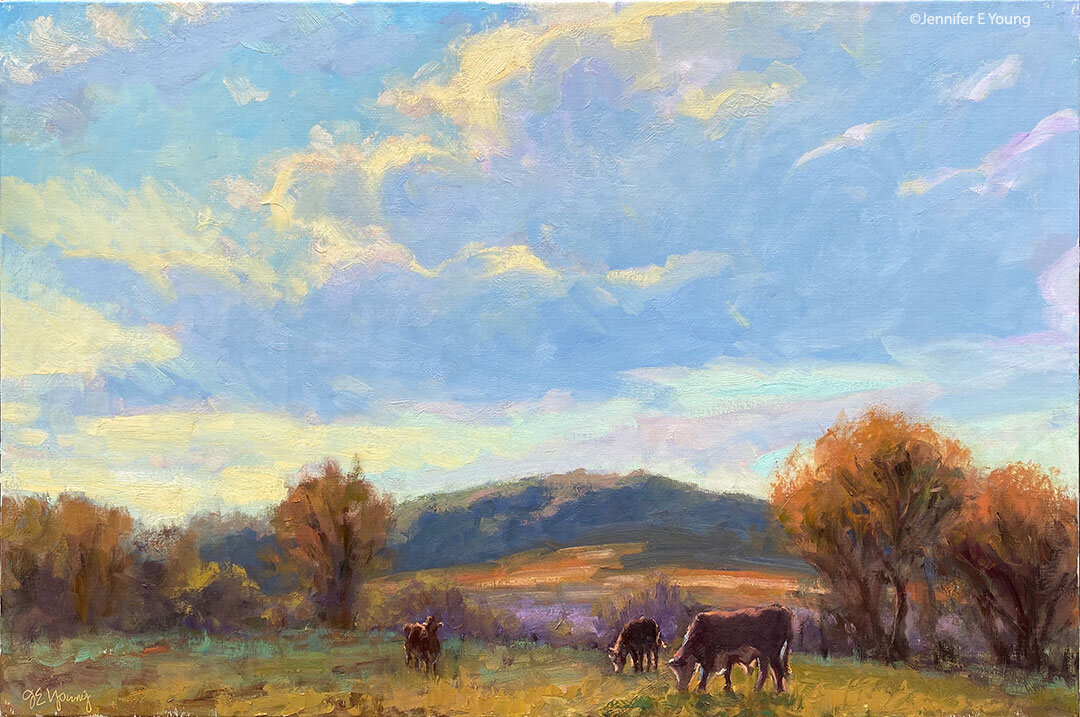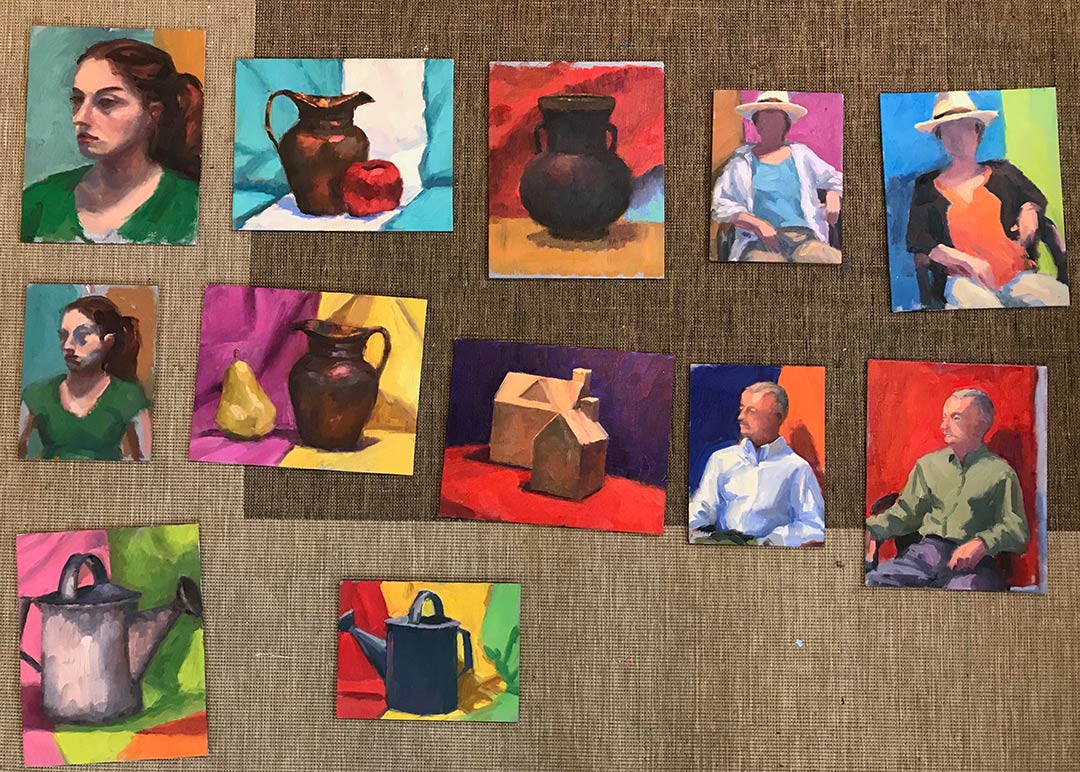Plein air easels (or "gotta-have-it-itis")
/*Note: This is the first in a series of posts I am writing about artist's easels. To continue reading the other installments, click on the following links: Part II: Guerilla Painter's Pochade Box Part III: My Soltek Easel Part IV: A pochade box for travel
If you're an artist, (or if you're married to one) you may by now be familiar with a common artist-borne affliction: "gotta-have-it-itis". This is when you see, read, or hear about an item recommended by a fellow artist, and you figure that this thing, whether it be a particular brush, a paint color, easel, or whatever, is THE thing you've been missing all of your life, and THE thing that will make you a much better artist.
Well, while having the right tools can certainly help the creation process along a great deal, a reality check would tell all of us oil painters that in our craft, we are ultimately dealing with the following rather primitive ingredients: a stick with hair on the end, mud mixed with oil, and cloth. And while the greatest investment should be in the time needed to learn and practice our craft, it IS fun to play and experiment with a few new tools...especially ones that help make life a little easier.
However, there's a big difference between investing in "a few" tools and getting caught up in aforementioned affliction. As you will see, I've not been immune to these pitfalls. But I think Ihave finally decided it's time to get real and stop the madness. While in recovery, I thought I'd at least share some of my experiences with a few "tools of the trade". Who knows? Maybe it will help a fellow artist or two with their decision-making process.
I'll start with what can be one of the most expensive tools-- the easel. As both a plein air and studio artist, I "gotta have" at least a couple of versions of this item in order to more easily do what I need to do. (That's my story and I'm sticking to it! ) And since the weather keeps teasing me with hints of spring, I will start with easels of the plein-air-kind. Over the years I have accumulated five easels that fall into the plein air/portable easel category. Good grief. Can this be? I really do need help. The fact that I still have all of these easels actually brings up a related affliction common with many artists, called "pack-rat-itis." (This is usually diagnosed by an onset of weak protests such as "Hey, I might need that for something....someday.") But that is a subject for another time.
My first plein air easel was the Trident El Greco full French Easel. I bought this with very good intentions when I first started painting landscapes, based on a recommendation I read in a book about plein air painting. I won't even bother to provide a link to this easel. Sorry, but I really hated this thing, pretty much from the get-go. The first time I used it I lost 2 wing nuts journeying from my car to the painting site, which made the legs impossible to stand. After that I started packing extra wingnuts with my supplies, for the next ones that would inevitably loosen and fall off, no matter how carefully they were secured in advance. The other annoyance was the weight. As plein air painters, we are always and forever looking for ways to lighten the load, correct? Well, this easel ain't it! I am a bit of a shrimp, but even so this easel has far more weight and bulk than is necessary for plein air painting.

Here I am in a face-off with my nemesis, El Greco. (I don't really remember the circumstances of this photo, but I believe my haughty look can be attributed to a wrestling match that ensued during setup just prior to the snapshot.)
I might have dealt with the weight and clumsiness at least a little longer if it was a sturdier easel. Maybe my easel was just from a bum lot, but the final annoyance was that the El Greco did not withstand even modest use before it started to fall apart. The nuts began to slip and other screws quickly started to strip. The wood on one leg splilt and cracked to the point where the thing would not stand at all. And no, I didn't abuse it or throw the thing down the stairs, though there were plenty of times that I wanted to!
El Greco is now "La Tavola". Or if we're sticking to Spanish, "La Mesa". It can still work as a table easel or receive a painting that needs to dry, though mostly now it just receives glares and passing insults. IMO, a better alternative would have been a french half-box (from many accounts, the Julian brand seems to be one that is tried and true). This is a smaller version of the French style easel (for those of you who are sticklers for tradition and have a soft spot for wingnuts.) The half box has the same size 12x16" palette as the full French, by the way. Only with the half box it folds in half rather handily to fit in the box.
Overall though, the French easel, while pretty to look at and readily available most anywhere, is too fragile and cumbersome for my taste. After my first foray into this design, I soon decided I was finished with all of that and moved directly on to Easel #2: my first pochade. I will write about that in a future post, so stay tuned for the next installment of this mind-numbing nail biting tale.
*Note: This is the first in a series of posts I am writing about artist's easels. To continue reading the other installments, click on the following links:
Part II: Guerilla Painter's Pochade Box Part III: My Soltek Easel Part IV: A pochade box for travel













